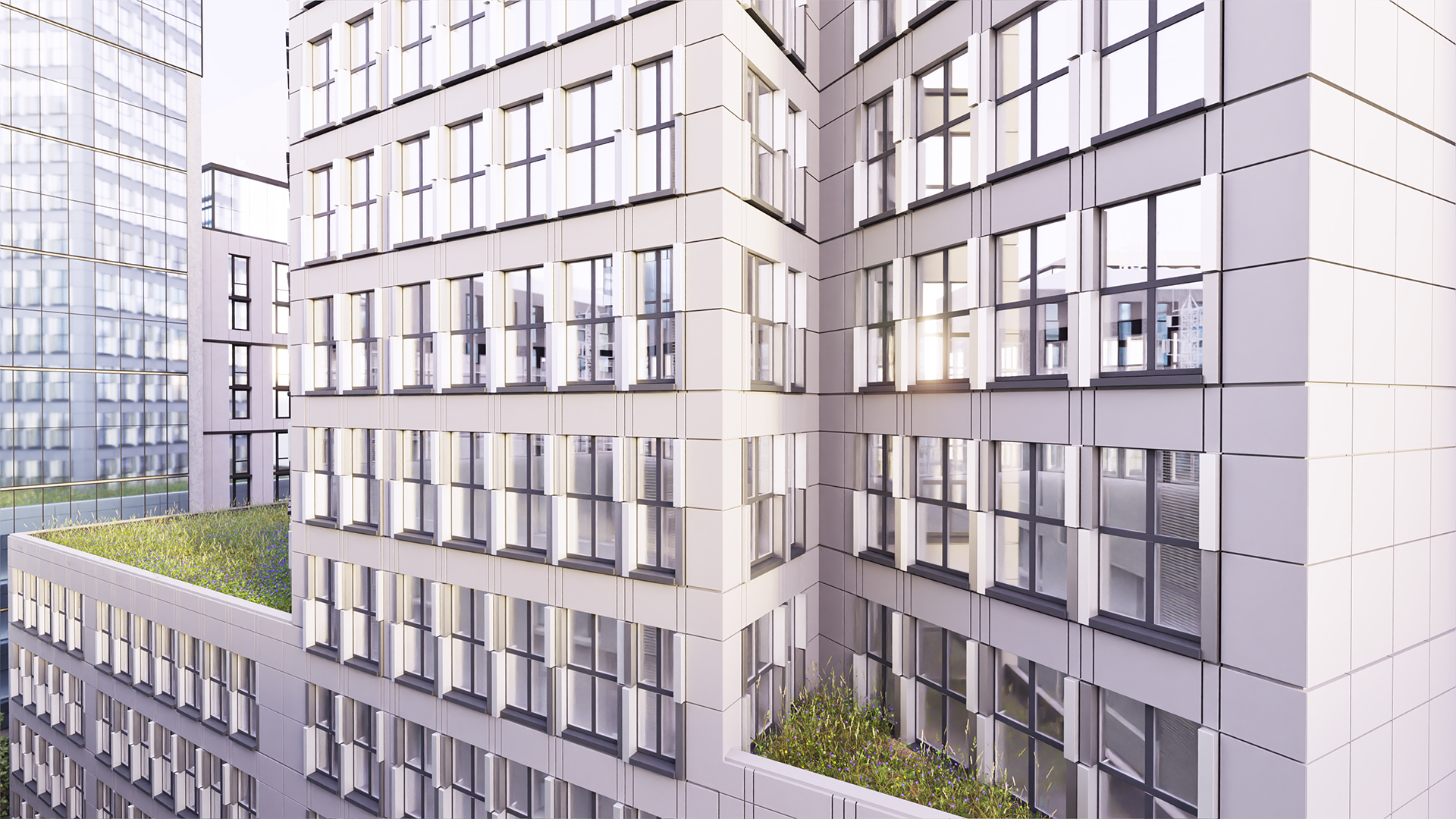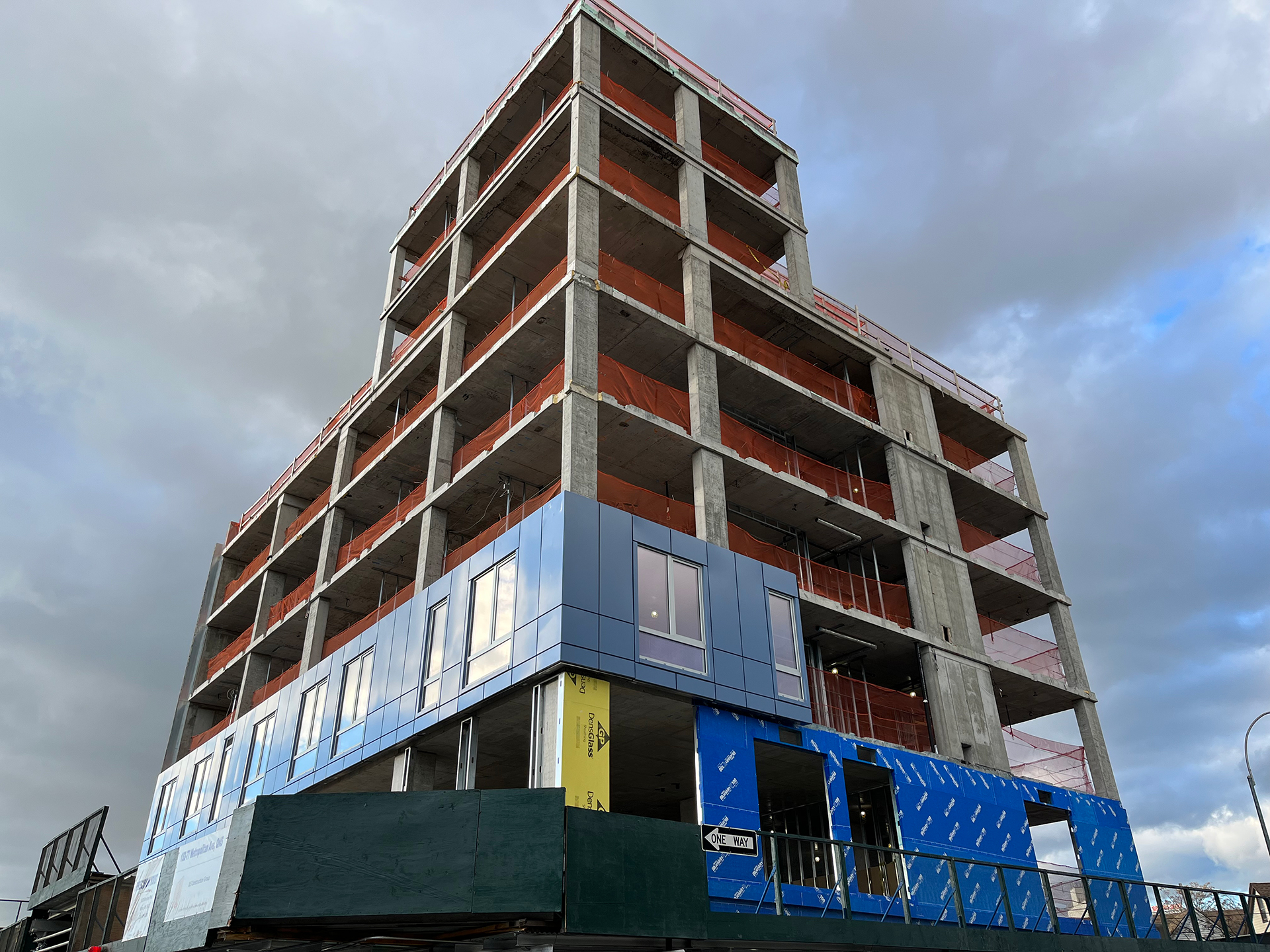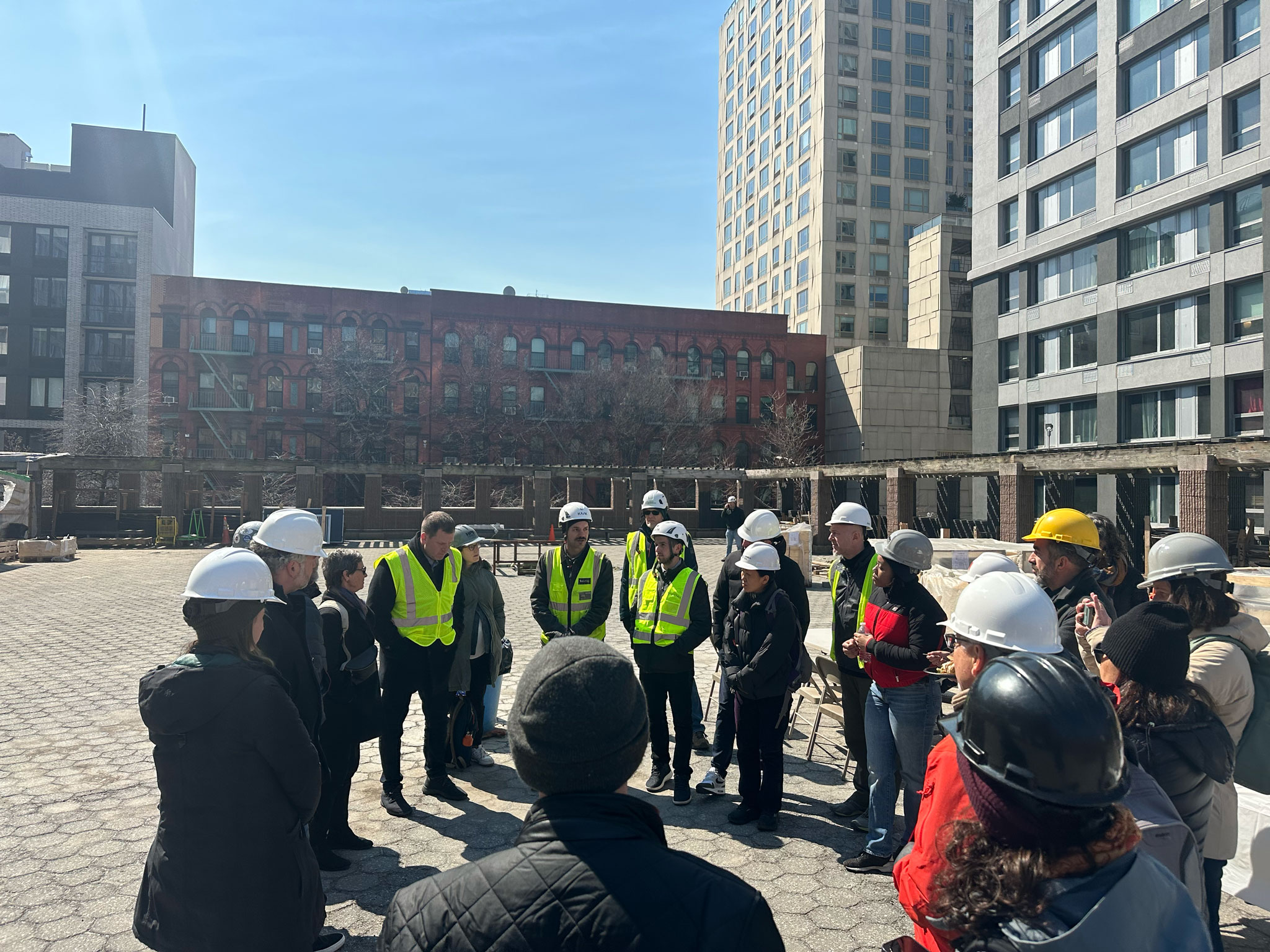How Dextall Integrates AI into Facade Design and Installation

Dextall offers a new approach to facade construction by combining advanced technologies with practicality. Thanks to its proprietary Dextall Studio platform, which includes built-in artificial intelligence algorithms, now automates what used to take 6-36 months and compresses it to less than 2 weeks, with a development roadmap toward 24 hours.
In this process, artificial intelligence does not replace the creative contribution of the architect but acts as a powerful assistant that takes on technical checks, coordination, and production optimization. This helps avoid errors, reduce labor intensity, and ensure transparency at all stages-from design to installation.
Accelerating the Process from Design to Installation
Dextall is actively transforming facade construction by helping professionals from different disciplines coordinate their efforts and work more efficiently. This allows for a time savings demonstrated: facade moves from design to installation 4x faster, confirmed on $150M+ projects, including towers up to 28 stories.
This result is achieved through the full integration of key stages-design, manufacturing, delivery, and installation of facade systems. The coordinated work of different teams, combined with the use of modern digital tools, eliminates duplicated effort and optimizes workflows. Each step follows a clear plan, while real-time performance monitoring helps improve quality and predictability of outcomes.
Automation of Complex Technical Stages
The main challenge of facade design lies in accounting for numerous details: panel structures, fasteners, insulation layers, and safety standards. By leveraging digital platforms, it becomes possible to:
- Create precise 3D models in which all technical elements are represented with high accuracy, preventing errors at the planning stage.
- Conduct automated compliance checks with building standards and identify technical conflicts in advance to avoid future problems.Dextall Studio automatically runs code compliance checks, clash detection, and generates shop drawings for certified fabricators.
- Optimize the selection of materials and system parameters in line with architectural requirements and installation conditions.
- Generate transparent and up-to-date budgets, while automatically launching production requests with certified partners.
- Manage logistics and monitor every stage of production and transportation with the help of advanced analytical tools.AI-powered prefabrication and logistics reduce on-site waste and transportation emissions by more than 80%.
This approach significantly reduces risks and makes the technical process more efficient and easily understandable for all stakeholders.
Real-World Cases of Time Reduction
Dextall's approach has been confirmed by success in various large-scale projects, particularly in New York's high-rise sector. The main results include:
- Design and documentation cycles compressed by 80%, dropping from months to less than 2 weeks.
- Faster permitting processes due to the preparation of complete and properly structured technical documentation packages.
- Rational and systematic management of supply chains and installation, eliminating downtime and unforeseen delays.
- Standardized system components and detailed instructions have cut installation labor requirements by up to 87%.
- Finally, substantial results: up to 43% reduction in embodied carbon, 22% drop in operational carbon; facade panels with thermal resistance values from R-16.9 to R-35.5 deliver average operational energy savings of 20%.
As a result, developers gain the ability to implement their projects quickly, without compromising either quality or the uniqueness of architectural solutions.
Supporting the Creativity of Architects and Developers
The company creates an environment where architects can realize their creative ideas without limitations while maintaining full control over facade design. They support this process by providing transparent and reliable tools that simplify work with technical aspects and remove unnecessary obstacles. Thanks to optimized processes and smooth collaboration among all project participants, the architect's creative vision remains central, while execution is precise and efficient.
Dextall Studio acts as an assistant working behind the scenes-it takes on routine tasks such as code compliance checks, detecting technical conflicts, and managing production logic. This allows architects to focus on what truly matters: creating a unique identity for the facade.
Maintaining Control over Design
Architects are given flexible tools that enable them to customize each facade element according to their vision-from selecting materials and color palettes to positioning profiles and templates. Every change is instantly reflected in a realistic 3D presentation, allowing them to evaluate the impact of decisions on the overall appearance of the building.
The technology acts as a helper: it automatically performs compliance checks, identifies potential conflicts, and coordinates production requirements in the background-freeing the architect from unnecessary technical details. This creates a balance in which creativity fully governs the building's appearance, while artificial intelligence ensures accuracy and production feasibility.
The flexibility and transparency of the process make it possible for architects to quickly experiment with design alternatives without worrying about losing quality or delaying the project. At the same time, manufacturing receives clear and cost-efficient instructions, minimizing the risk of errors and onsite delays.
Collaboration with Leading Architectural Firms
Dextall partners with leading global architectural companies such as SOM and SLCE Architecture. These partners already leverage the company's technologies and approaches in the realization of large-scale and complex projects, proving that today's facades can combine design excellence with technological sophistication.
Key advantages of such collaboration include:
- Joint planning and fast data exchange among all project participants.
- The ability to bring bold architectural visions to life without compromising technical or manufacturing aspects.
- Strong transparency and control at every stage, enhancing both trust and quality.
This type of partnership allows innovative ideas to become reality while preserving creativity and efficiency.
Ecology and Production Efficiency
In modern construction, environmental responsibility is an essential component of project success. Prefabricated facade systems not only make it possible to implement architectural solutions quickly but also significantly reduce negative environmental impact. The production of facade panels at regional facilities, under strict quality control, minimizes construction waste, while optimized logistics-supported by basic artificial intelligence algorithms-helps reduce transportation emissions.
Artificial intelligence assists users in efficiently planning production and logistics processes, making them more environmentally responsible without interfering in creative or managerial decisions. As a result, the overall carbon footprint and operational emissions are significantly reduced, while construction moves faster and delivers higher quality.
Reducing Emissions and Optimizing Resources
Prefabricated facades produced at regional facilities reduce waste and provide better control over the manufacturing process. This approach cuts carbon emissions by as much as 43% compared to traditional technologies, while operational emissions are reduced by 22%.
A key factor in this process is logistics optimization-using tools that determine the most efficient way to package and deliver facade panels. This reduces the number of transportation operations and minimizes environmental impact.
The advantages of this approach include:
- Reduction of construction waste through precise manufacturing.
- Use of recycled and environmentally safe materials.
- Decreased energy consumption during installation.
- Optimization of transport routes and packaging.
This combination of production and logistics optimization makes construction not only fast and accurate but also environmentally responsible.
Compliance with Current Environmental Standards
Modern megacities demand not only high-quality buildings but also strict compliance with environmental standards. This applies not only to energy consumption but also to emissions of harmful substances during both construction and operation. In such cities, strict laws regulate permissible emission levels and require increased building energy efficiency.
In New York, for example, Local Laws 97 and 11 establish high standards for reducing the carbon footprint of buildings and limiting harmful emissions. These regulations require the use of modern eco-friendly technologies and materials, along with ongoing monitoring and quality control at every stage of construction.
Dextall provides solutions that fully comply with these stringent requirements. Their facade systems not only help minimize environmental impact but also contribute to the creation of comfortable and safe urban environments while supporting sustainable development goals. By reducing the need for frequent repairs and extra energy consumption, these systems extend the service life of buildings and further lessen their environmental impact.
The adoption of such standards and technologies represents a critical step in the advancement of urban construction-one that responds to modern challenges and guarantees favorable living conditions for future generations.
Solutions for Affordable Housing
The shortage of affordable housing in major cities such as New York is one of the most pressing social challenges. With more than 6 million people seeking to purchase a home and only 10,000 affordable units available, budget management and construction timelines become decisive factors.
Dextall Studio is a unique AI-powered platform that reduces facade installation labor intensity by up to 87%, provides clear cost control from the very beginning of construction, and complies with union requirements. Thanks to this, developers such as L+M Development and Essence Development are successfully initiating and delivering large-scale affordable housing projects that previously might have been delayed due to organizational complexities.
Budget Transparency and Reduced Labor Intensity
Budget transparency is ensured through precise planning and automated cost estimates generated from real-time data, helping prevent unforeseen expenses. In addition, standardized facade solutions combined with optimized logistics reduce delivery times and lower installation costs.
Key advantages include:
- Clear and transparent budget allocation from the very start of the project.
- Rational organization of material delivery and storage.
- Standardization of system elements, which simplifies and accelerates installation.
- Full compliance with safety standards and union requirements.
These factors significantly improve the efficiency and speed of affordable housing project implementation.
Project Examples from Leading Developers
Projects by companies such as L+M Development and Essence Development clearly demonstrate the effectiveness of using prefabricated facade systems in workforce housing. Through modern technologies and innovative approaches, these developers have been able to:
- Shorten construction and facade installation timelines.
- Ensure budget transparency and financial control.
- Meet all union rules and building standards.
- Scale projects to fit different needs and conditions.
Innovative solutions supported by digital platforms are opening new opportunities for affordable, high-quality housing in major cities.
Intelligent Solutions for Accelerating Affordable Housing Construction
Today's challenges in the field of affordable housing require innovative and efficient approaches that ensure budget transparency, reduce labor intensity, and meet environmental requirements. One of the leading tools helping developers in this process is Dextall Studio-not just a platform for automating routine operations, but an intelligent instrument that optimizes planning, production, and facade installation, thereby improving both the speed and quality of construction.
Such technological solutions open wide opportunities for construction companies to implement socially significant affordable housing projects while also supporting sustainability principles and reducing environmental impact.
The integration of digital tools with advanced manufacturing processes is a key success factor that ensures the stability and durability of urban residential spaces.
Key Questions About Intelligent Technologies in Affordable Housing
How do intelligent technologies accelerate construction?
They optimize facade planning and installation, significantly reducing overall construction time.
Do these technologies allow for better budget control?
Yes. Clear planning and automated cost estimates minimize the likelihood of overspending.
What impact do innovations have on construction ecology?
They reduce construction waste and emissions, ensuring compliance with modern environmental standards.
Do these systems support compliance with union and building regulations?
Yes. They help meet all safety and quality requirements.
What benefits do developers gain from using intelligent solutions?
Faster construction, reduced costs, improved quality, and the ability to scale projects efficiently.












_format(webp).avif)
_format(webp)%20(6).avif)
_format(webp)%20(5).avif)
_format(webp)%20(4).avif)
_format(webp)%20(2).avif)
_format(webp)%20(3).avif)


.avif)
_format(webp)%20(2).avif)